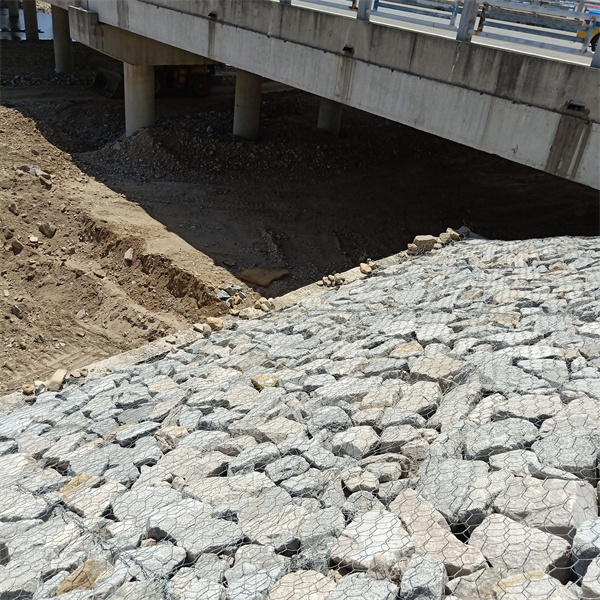سبتمبر . 25, 2024 17:36 Back to list
china gabion gravity wall
The Role of Gabion Gravity Walls in Modern Engineering Solutions
Gabion gravity walls have increasingly become a pivotal element in civil engineering, particularly in addressing erosion control, retaining structures, and landscape architecture. These walls, constructed from wire mesh filled with stones or other materials, serve both functional and aesthetic purposes in a variety of applications. As urbanization and infrastructure development continue to rise globally, the use of gabion gravity walls, particularly in China, exemplifies the convergence of practicality and innovation.
Understanding Gabion Gravity Walls
Gabion walls consist of a series of interconnected wire mesh baskets filled with natural stone, granite, concrete, or other durable materials. The structure relies on its weight and friction with the ground to resist soil pressure and water runoff. Unlike traditional retaining walls made from concrete or masonry, gabion walls offer flexibility and adaptability in design, allowing them to conform to the natural terrain.
One of the primary advantages of gabion gravity walls is their environmental friendliness. The use of natural stones not only integrates the walls into the landscape but also promotes biodiversity. Gabions can create habitats for small animals and plants within their mesh framework, enhancing the ecological value of a project. Moreover, the porosity of gabion walls allows for the natural drainage of water, reducing the risk of hydrostatic pressure buildup behind the wall.
Applications in Erosion Control and Retaining Structures
In regions of China prone to soil erosion and landslides, gabion gravity walls present an effective solution. These walls can be strategically placed along riverbanks, slopes, and embankments to stabilize the soil and prevent erosion. The flexibility of the gabion structure enables it to absorb and dissipate energy from water runoff, reducing the velocity of water that can lead to soil displacement.
Additionally, gabions can be used to form terraced retaining walls in hilly or mountainous regions. This application not only aids in soil retention but also provides a means for cultivating agricultural land by creating flat terraces that are conducive to farming. In areas facing urban sprawl, where land is at a premium, these structures offer a sustainable method for managing land use while preserving natural surroundings.
china gabion gravity wall

Aesthetic and Architectural Integration
Incorporating gabion gravity walls into landscaping and architectural designs allows for unique expressions of creativity while maintaining functionality. These walls can be customized in height, shape, and stone selection, enabling architects and designers to create visually appealing structures that blend seamlessly with the environment. For instance, in parks and recreational areas, gabion walls can be utilized as seating arrangements, flowerbed enclosures, or decorative elements that enhance the aesthetic appeal of the landscape.
In urban developments, gabion walls offer an alternative to more rigid, sterile concrete structures. They can soften the architectural lines of cityscapes while providing crucial support for vehicular and pedestrian infrastructure. As sustainable design practices become more prominent, the demand for versatile solutions like gabion gravity walls is likely to increase.
Challenges and Future Prospects
Despite their many benefits, gabion gravity walls do come with challenges. Proper installation is crucial to ensure stability, and maintenance may be required to prevent the degradation of the wire mesh over time due to rust or corrosion. Nonetheless, advancements in materials technology and engineering practices are likely to enhance the durability and longevity of gabion structures.
Looking toward the future, the role of gabion gravity walls will likely expand, especially in response to climate change-related challenges. As extreme weather events increase, the need for adaptable and resilient infrastructure will become paramount. Gabion walls, with their ease of installation and environmental benefits, are positioned to be a critical component of sustainable urban planning.
In conclusion, gabion gravity walls represent a harmonious blend of engineering, environmental consciousness, and architectural innovation. Their applications in erosion control, retaining structures, and landscape design highlight their versatility and importance in modern civil engineering practices. As the world continues to seek sustainable solutions for infrastructural challenges, gabions are set to play an increasingly significant role in shaping resilient and eco-friendly environments.
-
Why PVC Coated Gabion Mattress Is the Best Solution for Long-Term Erosion Control
NewsMay.23,2025
-
Gabion Wire Mesh: The Reinforced Solution for Modern Construction and Landscape Design
NewsMay.23,2025
-
Gabion Wall: The Flexible, Seismic-Resistant Solution for Modern Landscaping and Construction
NewsMay.23,2025
-
Gabion Wall Solutions: The Durable, Decorative, and Affordable Choice for Every Landscape
NewsMay.23,2025
-
Gabion Basket: The Durable and Flexible Alternative to Traditional Retaining Walls
NewsMay.23,2025
-
Gabion Basket: The Proven Solution for Slope Stability and Flood Control
NewsMay.23,2025
-
Versatility of Chain Link Fence Gabion
NewsMay.13,2025






